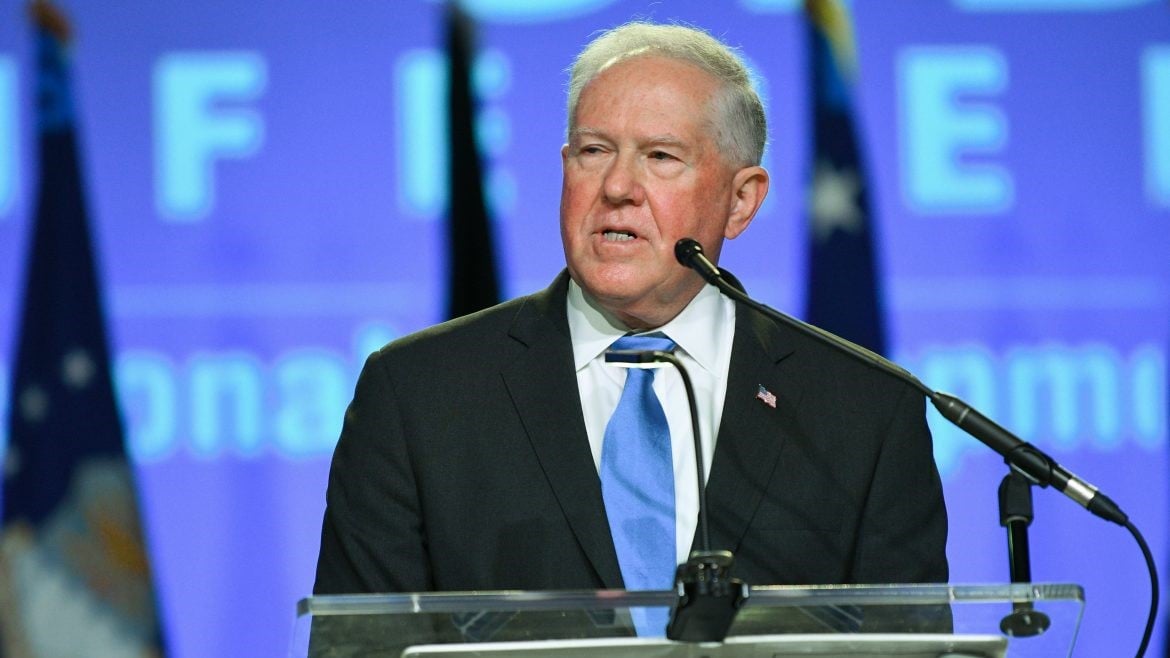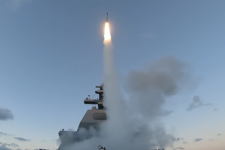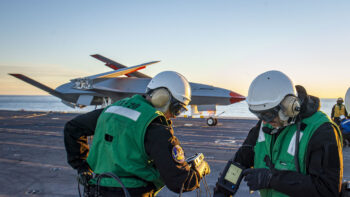
Frank Kendall, Air For secretary, speaks at the annual Air Force Association conference in Sept. 2021. (AFA)
AFA AIR WARFARE SYMPOSIUM: Russia’s invasion of Ukraine should instill a greater sense of urgency in the US military about taking the steps necessary to prepare itself for war with major powers like Russia or — especially — China, Air Force Secretary Frank Kendall said today.
While a major land war in Europe may have seemed like a remote prospect months ago, Russian President Vladimir Putin’s assault of Ukraine proves that war between great powers can break out at any time, Kendall said.
But despite the visible threat that Russian aggression poses in Europe, the US military should not take its eyes off China, he argued.
“In my view President Putin made a very, very, serious miscalculation,” he said. “He severely underestimated the global reaction the invasion of Ukraine would provoke, he severely underestimated the will and courage of the people of Ukraine, and he overestimated the capability of his own military. Perhaps most of all, he severely underestimated the reaction from both the United States and from our friends and allies.”
“Where this will lead, I honestly don’t know, but if President Putin thought he could divide NATO, divide Europe, and even divide the United States, he was wrong. Now it’s up to all of us to ensure that something like this does not happen again,” he said.
RELATED: Air Force’s first hypersonic missile could start production this year
While Russia and other adversarial nations and organizations should not be discounted, China’s ambitions, resources and authoritarian system of government will make it the US’s single greatest national security threat, Kendall said, adding that he “is confident” that the upcoming national defense strategy will maintain the view of China as the Pentagon’s pacing challenge.
To thwart China, Kendall has laid out a set of seven operational imperatives — basically a list of future investment priorities that would be needed to counter China in an invasion of Taiwan or a Russian incursion into NATO-owned territory.
“These are not the types of problems the DAF [Department of the Air Force] has been focused on since the Cold War ended and especially not since 9/11,” he said. “But as current events show, they are the types of problems we must be organized, equipped and ready for. Not some time in the future, but now.”
RELATED: General Atomics debuts ‘Gambit’ drone for Air Force’s unmanned sensor contest
The seven imperatives are:
- Defining resilient and effective space order of battle, which is focused on ensuring the Space Force’s satellites are survivable.
- Achieving an operationally optimized Advanced Battle Management System, which is focused on defining the Air Force’s portion of the joint all domain command and control concept.
- Achieving Air and Ground Moving Target Identification at Scale, which will determine how to replace aging surveillance platforms like the E-8C JSTARS that provides targeting data to other platforms. Kendall noted that the “ideal” way to recapitalize its current capabilities is with space-based sensors.
- Defining the Next Generation Air Dominance System of Systems, which will solidify the requirements of the uncrewed aircraft that will operate alongside the Air Force’s sixth generation fighter. Kendall stated that the Air Force is looking for one to five uncrewed systems that can take commands from a fighter pilot, but operate somewhat autonomously.
- Defining Optimized Resilient Basing, which seeks fund projects that will allow the Air Force to distribute its forces away from main operating bases in the event of a major conflict.
- Defining the B-21 Long Range Strike Family of Systems, which revolves around the design of new drones that will function alongside the B-21 bomber. Kendall said he expects the uncrewed systems to cost at least half as much as the B-21, and deliver “sensors [and] other mission platforms” and could even be sacrificed to give an operational advantage.
- Readiness of the Department of the Air Force to Transition to a Wartime Posture, which will involve investments to ensure the Air Force and Space Force can quickly mobilize during a conflict with China or Russia.
Tim Grayson, formerly the director of DARPA’s strategic technologies office, has been tapped by Kendall to oversee work on the imperatives. Each of the seven imperatives is also currently being analyzed by leaders from the Air Force’s operational and acquisition communities, with those officials set to present recommendations to Kendall this spring that will inform the fiscal 2024 budget.
Industry participation will also be critical for ensuring that the Air Force is able to successfully achieve its imperatives, Kendall said.
“This is where the [Air Force] will be investing, and this is where we need your expertise, intellectual capacity, and creativity,” he said.






















